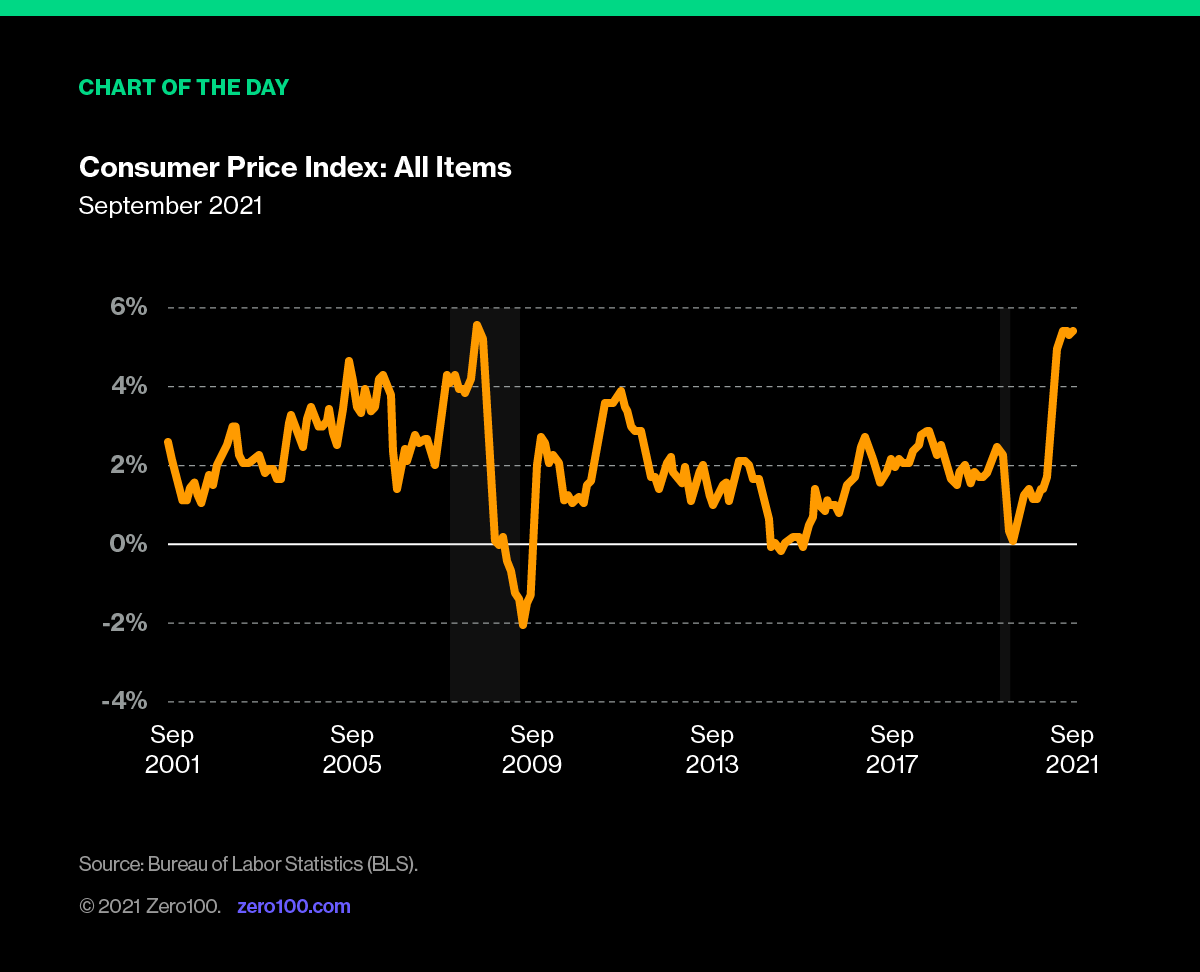Inflation is here. Some commentators (Jack Dorsey on Twitter, for instance) sound pretty freaked out and, while cooler heads including Goldman Sach's and Bloomberg's Tyler Cowen may be less hyperbolic, all agree inflation is here for the foreseeable future. For supply chain leaders it is a sneaky opportunity to get off the cost cutting treadmill. Here are a few things that might make sense now:
Speed Up...
Capital spending on automation– Wages are going up for sure, and even if some of this effect is temporary, the genie is out of the bottle. Unions are seizing the moment to increase pay, and at a more general level, people seem to finally have had it with hard work for low wages. Automation has been on a tear for years and as the technology improves, not only will it help dampen variable cost pressures, but it will also let you raise salaries and invest more in skill development for those select people you do hire.
Hyper-targeted promotions based on margin contribution – My colleague Deborah Dull called this out last week, but the story only gets stronger in the face of inflation. Analytics that solve for margin net of inventory location and transport cost and feed into suggestion engines for online shopping, can not only keep sales coming in but give customers a sense of stability that they will appreciate given all the talk about soaring prices.
Shortening supply chains – You're probably well on the way to unraveling any overweight reliance on long global lines of supply, but any steps taken to develop supply closer to market is going to tamp down rising costs of shipping. There may also be some brand benefit to spending locally rather than sending money abroad – an especially appealing strategy for the Brexit-plagued UK.
Dematerialization – Not exactly easy, and not really a supply chain responsibility, but a definite winner going forward, so why not accelerate. The idea is exemplified by Nike who has built a booming digital business (Nike Run Club, Nike+) on the back of physical product (shoes, clothes) imbued with enough coolness to give customers a reason to pay more and feel good about it. Or better yet, to pay for purely digital services. Ever smarter products (Peloton for B2C, Thermo Fisher Scientific for B2B) earn ever more money on pure information products that won't feel inflation in the same way, if at all.
Slow Down...
Creation of Unskilled jobs – This one is a twofer: get away from low-cost country sourcing based on cheap labor and avoid process designs that depend on minimum wage workers in rich countries. Although this is very difficult to do and can have bad optics (eliminating jobs), it is possible as demonstrated by app-based ordering in restaurants like Dunkin' Donuts or self-driving trucks at FedEx. We've written about this before and see inflation as another reason to slow down hiring for jobs that depend on human bodies as interchangeable parts.
Ordering into backlog – Rising price expectations might make it seem like a great idea to lock in purchase orders before prices go up, but this is likely to backfire. Tradeshift, which provides e-invoicing services reports that “Global invoice volumes, which indicate how quickly suppliers are able to fulfil orders, climbed by a slower than expected 5 points and remain 31 points below the pre-pandemic forecast range.” If this phenomenon is anything like what happens when a delayed flight becomes a magnet for more delays, maybe it's better to hold off and avoid making promises you're not sure you can meet.
Passing along price increases – If customers can be insulated from price hikes, they will likely remember you fondly. At the moment the big guys (Walmart, Amazon, Target) are best positioned to do this, but even small businesses can get part of the way there with “skimpflations” which is basically trimming the edges of what you deliver while customers are still relatively forgiving. This may be dropping a few SKUs, clustering deliveries to save shipping costs or smaller pack sizes. Less product for the same price isn't great, but consumers hate inflation, so pick your poison.

Critical Reading
MIT TECHNOLOGY REVIEW
How AI Could Solve Supply Chain Shortages and Save Christmas
Commentary: Deep dive into how digital twins can predict disruptions, pinpoint bottlenecks, and suggest remediations during the continuing supply chain crisis.
#AI #logistics
FORBES
Accelerating Sustainability Across The Automotive Supply Chain
Commentary: 88% of supply chain decision-makers have crafted a clear mission statement around sustainability. But only 52% have reduced shipping miles and only 21% have achieved complete visibility into their supplier sourcing.
#sustainability #auto
FINANCIAL TIMES
COP26: Why Companies Must Broaden the Emissions Fight Through Supply Chains
Commentary: Timely exploration of the share of corporate carbon footprints that result from indirect activities or external assets.
#COP26 #sustainability #scope3
